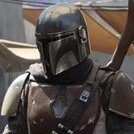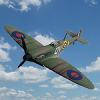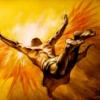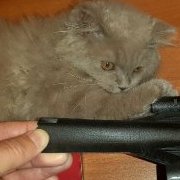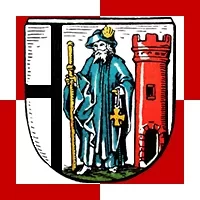Leaderboard
Popular Content
Showing content with the highest reputation on 15/12/21 in all areas
-
Greetings Friends! Here is my latest model completion... The HK Models 1/48 B-17F Memphis Belle... What a kit! It took me full time 3 weeks to build this! I had 2 weeks off between jobs which helped! This is basically OOB with the only changes being the excellent Eduard 'Look' Instrument panel and pilot seat belts. The other change related to decals. The Kit comes with excellent Memphis Belle decals by cartograph. However, the insignias are not properly drawn. The Star was not symmetrical! I substituted kits world Insignia and used the rest of the excellent stencil kit they sell for B-17F's. Otherwise kit decals were great! I attempted to paint it like it appeared in the US Bond drive where there are many photos of all angles of the Belle. The appearance changed a little, and at some point the ship got a repainted or new vertical fin. There are some airframe patches around the plane that I tried to replicate. The paint is Gunsie Mr. Color, Olive Drab C12 and Dark Green C302. The Underside Grey is Testor's Model Master AMC Grey. I hope you like it and leave comments... Hope you guys try and tackle a B-17 in 1/48! Last one I did was the Monogram in the 1970's! It's like a rite of passage for a modeller! I found out after it was done, that it doesn't fit in my display case! I will have to get a new bigger case for this one!23 points
-
Dear fellow modellers, I would like to show you my latest finished model. The Caravelle III is made from the very challenging Mach 2 kit with the use of Werner Lehmann's excellent Authentic Decals Window set and the Airway Graphics set for the SAS livery. The most visible flaw of the kit is the wrong position of the cockpit windows. This could be mitigated by the use of decals but required a lot of sanding. Other difficulties where the fit of the wings to the fuselage. I opened one engine nacelle and put in an engine. The experts will recognize where it comes from originally. I cut out the flaps and installed them in a lowered position, a state you can often observe on fotos of parked aircraft. The original OY-KRD is preserved in a Danish museum and I used some fotos to work out some details. Enjoy watching the fotos! greetings from Germany, Norbert22 points
-
Hi all, Here's my completed model of Avro Vulcan B.Mk.2, Serial No:XM573 of No.44 (Rhodesia) Squadron. The squadron was reformed in 1960 at Royal Air Force Waddington in Lincolnshire, UK, initially operating the Vulcan B Mk.1 from August 1960 then converting in January 1961 to the Vulcan B Mk.1a. The Vulcan's were operated as high-altitude bombers as part of the UK's strategic nuclear deterrent. In 1964,and due to the use of Soviet Surface to Air Missiles (SAMs), the Vulcan became vulnerable and their role was changed to low level penetration bombing. In 1968 the squadron was equipped with eight of the B Mk.2 versions, which carried the WE177 'laydown' bombs. In 1969 the Royal Navy took over the UK's role for nuclear deterrent and the Vulcan force was assigned to SACEUR, for the support of land forces. In this role conventional weapons would have been used with the option to convert to nuclear weapons should the situation on the ground escalate. The squadron served in this role until 1982, when their Vulcans were involved flying combat missions during the Falklands War. The squadron was eventually disbanded in December 1982. The model is the new release in 1:72nd scale by Airfix. The decal markings are partly from the 'Kits World' (KW172214) set. Paints used were primarily 'Tamiya' acrylic: Camouflage - RAF Medium Sea Grey (XF83) and RAF Dark Green (XF81). Anti-flash white - White (XF2) with added Buff (XF57). 'Flory' Dark Dirt wash for panel line wash and 'Alclad' Light Sheen (ALC-311) used for final sealing. Display base: 18mm thick MDF with routed profile edges and 8mm diameter holes for the model support rods. Sealed and painted matte-black with felt pads on the underside. 8mm diameter acrylic rod heat bent as support rods into the modified internal structure of the Vulcan model. Top surface is 2mm thick black Perspex, bored through to accept the ten squadron badges, the two acrylic support rods and black edge screws. Ten 25mm diameter lapel badges, representing the Vulcan squadrons, with the rear face clamping pins removed and filed flat. A woven No.44 Squadron patch. A clear acrylic cover fits over the display as protection against dust or damage. Please excuse the quality of the photographs - not that great. Mike17 points
-
The fuselage was flipped over now it was a bit stiffer torsionally and the bottom half was planked. The tail was skinned with balsa sheet same as the wings There are fairings for the tail which I carved from very soft balsa block (soft balsa is much less dense than hard balsa - you have to choose your material carefully depending on where on the model it goes) The actual shape of the nose was a bit goofy so I doubled up the planking to shape to a fuller more rounded profile Next it was fibreglassed again with 25g/sq.m cloth and epoxy and spot filling was done using 3M Acrylic Stopper, an automotive surfacing product - it's the red stuff. Nose wheel doors were made the same way as the mains were Cannon fairings were made using styrene tube and faired in. These are open, the intention being to help ventilate and cool the electronic speed controllers for the two brushless motors. I made a mould for the canopy from wood and insulation foam which was then glassed. I made a home made vacuum forming box and heated my clear acetate in the oven. I got one pull which was almost good enough but damaged the mould. The mould was repaired, but really it needs a fibreglass female taken from it, then a male plug poured from resin to cope with vacuum forming torture. I never got as far as doing that, and then my daughter was born. The model survived our house move and is hanging, just like this, out in the garage. Thanks for reading, and I hope it wasn't too dull for fine scale modellers. Sorry about the lack of rivets, panel lines and photo etch16 points
-
I really never thought I would see this day, my AA Conqueror finally finished! I started a WIP thread in 2015, then abandoned the build. Started a new thread in 2018 which then went dormant for two years and then, after completing the build stage in August this year, I have finally just got the painting and mounting done. If you have seen the WIP threads you will know this is an AA Mk2 kit with quite a bit of scratch building and some Cromwell models parts necessary to get it built. It takes the record for most expensive model I have ever built, and is a very close second to Merlins Models Vampire for the worst kit I have ever built. It also has the dubious honour of being the longest build in total time from initial start to completion. Before I started construction it was my intention to make a nice clean parade ground vehicle, and although it was tempting to hide many of the kits problems with a layer of mud I have stuck to my original plan. It does have some subtle 'weathering' but my camera was having trouble handling the dark colour so the finer details are not obvious in the pics. The drivers hatch open stay is missing;- it went AWOL sometime between the end of the build and the start of painting and I just could not be bothered making a replacement. So here it is, an amalgam of AA, Cromwell models, Amusing Hobby and a bit of scratching. The fire extinguishers are Panzer Art, Little Lenses for the lights, and Markits railway carriage handles for the fire handles. Paint is my own DBG based on Humbrol 195, with Tamiya acrylic wash.15 points
-
I'm not sure how much if at all this will interest this forum, but I decided to go retrieve my old Photobucket images after lots of emailed threats to delete them due to my inactivity, but I felt a bit nostalgic for old productive me and thought I'd share them anyway. I started this in 2009 before my eldest daughter existed. I was an active radio controlled aeromodeller at the time. I got as far as vacuum forming a canopy then it all went on pause where it remained. Lots of other stuff happened and I haven't flown r/c in a long time now mostly because I consider hobbies where one abandons the family and children for whole days at a time intrinsically incompatible with being a good father. I'm still not a good father, but I'd be a worse one if I was away all day every Saturday and Sunday indulging myself with expensive toys. Anyway, one day I was bored and had nothing to do (those are two distinct things for a Millenial adult) - remember when a 3.5x salary mortgage multiplier and a retirement age of 65 was normal? Ho ho ho... I laid out some plain wallpaper on the kitchen table and drew myself a plan for a wing. I don't recall why I chose 1/8th scale, but it sized out roughly to 48" span and 60" long which didn't seem too ambitious or costly to furnish with power and control gubbins. I used to do things like that often but this time I decided to start cutting wood. I devised a cunning plan to build the wing with the rear spar flat on the bench and work upwards towards the leading edge. First it was necessary to asssemble the retractable undercarriage plywood bearers onto beefy ribs cut from 3/16" balsa. These would give me something easy to square up for jigging the rear and forward spars together. Jigging the spars up was pretty simple and aided by some geometry checks The ribs were glued in between the spars I drew all ribs with jig pieces to sit square on the building bench to ensure the correct wing incidence happened. Thus, the swept outer portions of the forward spar were added with gusset blocks for strength. Big chunks of soft balsa were added for the leading edges That made the assembly torsionally very stiff, so here I could add all the trailing edge stuff behind the rear spar. It was quite a broad chord now ... which drove me to gluing up wing skins flat on the bench. This avoids uneven joints. There was also a pile of hoops needed for the engine nacelles - although I think I started using these much earlier as the spars had doubler hoops laminated on as I recall now. As it was for electric ducted fan (64mm fans IIRC) the intakes need skinned internally as well as the exhausts. The wings and nacelles were skinned. In contrast to the pre-made-on-a-flat-bench 1/16" skins for the wings, the nacelles were planked in 3/32" soft balsa to give me something to sand smooth. Modelled by Gill, a regular sized human Soft balsa rings were added to the inlets to sand smooth, and I made fibreglass impressions of the bulges on the underside of the inner wing: ... which were cut to form the undercarriage doors and hinged accordingly. The wing was skinned with 25g/sq.m fibreglass cloth and epoxy resin14 points
-
In 2015, that is two years BEFORE 😡 the ICM put the new (beautiful) mold of the Dornier 215 on the market, I decided to make one, but given the horrible fuselage of the ICM kit, I decided to 'combine' only the ICM wings with the fuselage and the tailplanes of a Do17 Z Airfix. Work not easy but not impossible, as you can see from the photos (Of course, if you have the new '215, from 2017, the problem does not arise, as the new ICM mold is very good). Here some images of my Dornier 215 B-4, belonging to 1.(F)/AGr.124, based at Stavanger, sommer 1940. The nose decal is self-printed. Colours are mixes of Humbrol enamels. Hope you enjoy, thanks for looking. Giampiero Piva14 points
-
This build was part of the F-14 Tomcat STGB as well as part 4 of my VF-31 Tomcatters SIG build (built F-14D, F/A-18E, in-progress F-4B). The model of course is Tamiya’s amazing 1/48th F-14A with a few extras thrown in, but to be honest you really only need the Qunita Studio cockpit decals and some nice resin cans (and not the Aires ones like I used, surprise surprise they don’t fit without surgery!!!). The model just falls together, with maybe a couple of tiny spots of filler required, other than that it has to in my opinion as one of the best models out there to build for fit and finish. There were a few details that need to be changed on the model so are to represent an early F-14A-80-GR version, Tamiya includes some but they don’t supply the eastly type gun port vents. The scheme, other than being one of my favourites and if you know your US Navy squadrons a bit different. The decals are form the long since OOP Microscale set with includes decals for a Pacific Missile Test Center bird. When VF-31 replaced their F-4J’s they were still deployed on the USS John F. Kennedy and carried the tail codes AC, they operated off the Kennedy for a bit over 2 years (Oct1981 - May1984). They then moved on to the USS Forrestal, which they stayed with for 8 years with the F-14A’s. Now the USS Forrestal carried the AE tail codes. These decals have the AE code but the USS John F. Kennedy as the carrier. They are not a mistake either, I have only found one photo of this combo, all the others (and there are not many) have the correct carrier name with this tail code. The only other early scheme I have seen was a SuperScale set (again super rare) for the F-14A which had the AC code only and no Felix….. anyway….. ………time for some photos, a link for the build is supplied, plus some extra family photos as well. Thank you for looking, please enjoy. Model: Tamiya 1/48th F-14A Tomcat Paint: AK Interactive Real Color, and MRP, Tamiya Acrylics, Alclad Lacquer Extras: Amur Reaver – F-14 Tomcat Detail set DEF Model – F-14A Early Type wheel set Eduard – BigEd PE set Legend – F-14A/B Ejection seat set LF4046 Mircoscale Decals – F-14A’s. – 159449 Quickboost – F-14A Gun Cover Early Quinta Studio – F-14A 3D Decals ResKit – F-14A Exhausts Open & Closed set .... and some family photos13 points
-
This is the 1/72 scale MAZ 7917-7 from Zvesda. It carry the Topol ICBM SS-25. The kit has a high number count for this scale and chassis is quite detailed. The fit is ok and did not encounter major issues. The build is challenging, I added scratchbuild parts to improve the kit and bring it closer to what I desired. No aftermarket parts used. Here are the list I done to improve my build. 1. Full steering suspension modified to depict all the front four axle to steer to the left to give it a more dynamic pose. 2.All arial/mount/canvass cover scratchbuilt and sculpted. 3.Cab interior scartchbuilt (the kit has nothing inside it). 4.The inside large windows opened and glass simulated. 5.All outside windows opened and scratchbuilt to depict it in a window down position. 6.Front windshield wipers scratchbuilt. 7.Te two side mirrors and mount scratchbuilt to scale (original parts are overcalled). 8.Added right and left engine exhaust. 9.Front headlight scratchbuilt. 10. The ICBM is filled with sand to simulate weight and help with the overall stance. (weight around 400 gms.) Painted with acrylics and weathered with oils and pigment. This is by no means 100% accurate, some artistic licence to bring it to life at this scale. There are two parts in this pictures, one with just the truck alone and the other part are with the ICBM load out. I will show a full view and some close up views of the build. Have a hard time doing this at this scale but i'm happy with the results. Enjoy the photos and thank you for dropping by. Now for the photos of the ICBM load out and some close up photos. And for the scale comparison with a Tamiya Acrylic Bottle and my hand pointing to the model to give a sense of scale. Its small but kinda big for a 1/72. Thank you all for dropping by and enjoy.12 points
-
Following the various remarks on the 3D design (particularly here, on Britmodeller), some improvements will be done by FRROM and Special Hobby. The plan is, now (that might change) : - all the types of exhausts will be supplied (probably in all boxes - these are small parts). So, specific exhausts for the Belgian version, as well as three types for the other versions. Not sure there were exhausts protruding as much as indicated in the thread, they seem to be quite parallel to the cowling - clear part for the bombing panel under the fuselage (to be painted when necessary - we still don't know when Fairey and Austin started to put in place the clear panel) - cowling and fuselage shape around the engine will probably be improved (under study)12 points
-
Star Wars The Mandalorian – Razor Crest (06781) 1:72 Carrera Revell Firstly, some minor spoiler alerts. If you’ve not seen the series and plan on doing so, skip this section and go straight to text below 'The Kit' heading, where I’ll try to keep the spoilers to the minimum. We’ve all heard of Star Wars, the three trilogies, the spin-off films and now under the auspices of the massive Disney corporation, we are being treated to some television series on their streaming service Disney+ that are bringing back some of the magic that perhaps had been lost, or at least dulled over the years under the helmsmanship of J J Abrams. The Mandalorian reached our screens in 2019, right around the time the Covid-19 pandemic first hit, and it has helped keep us Star Wars fans entertained for two seasons now, with a third in the offing for 2022. It has brought us new characters into the much-loved Star Wars universe such as the Mandalorian, Din Djarin himself, Grogu the baby Yoda, and it has reintroduced the previously reviled but strangely popular Boba Fett, who seems to have mellowed during his time in the Sarlacc Pit, and has now got his own series on the strength of his performance in season 2. Even Luke Skywalker has made a brief appearance at the end of season 2, heavily de-aged to fit in with the show’s timeline of post Return of the Jedi Star Wars. The Razor Crest is an ST-70 Assault Ship that has seen better days since its service with the Republic, having survived the rise and fall of the Empire, to become The Mandalorian’s transport around the Outer Rim of the Star Wars galaxy catching bad guys for bounty. It was originally a scout ship, but is armed with a pair of laser cannon in the nose, and is capable of faster than light travel thanks to hyperspace engines that are presumably hidden inside the same twin nacelles that house the sub-light engines. Inside the ship is an extensively glazed cockpit and a large hold with a well-stocked weapons locker and a carbonite freezer chamber to store recalcitrant criminals that he’s taking back for bounty. Yes, it’s a Mandalorian thing, apparently. She survived several space battles, being stripped down to a bare chassis by Jawas, and a drowning on Trask, only to be thoroughly atomised by a blast from Moff Gideon’s cruiser at the end of season 2, much to my disappointment. I really liked that ship. The Kit Revell have the license for Star Wars model kits in Europe, and have released a mixed bag in unusual scales, some toy-like kits for the younger audience and reboxes of a few of the Bandai kits. This kit is none of the above, as it is firstly a kit in a recognised scale of 1:72 so will sit perfectly next to your more “serious” Star Wars kits, it is well-detailed, and most definitely not snap-together. Fabulous! We’ve been treated to some of the pre-production photos in the run-up to release and they have been appealing to say the very least, so I’m pleased and more than a little relieved to say all that promised detail has reached the moulds, as well as giving us a true sense of the real scale of this medium-sized ship, which will tower over an X-Wing in the same scale. The kit arrives in a deep end-opening box with an appropriately dramatic painting of the Razor Crest banking to one side with an X-Wing following behind. A Beskar masked Mando is looking on from the top right, and there is the usual Skill Level slider on the left that puts this firmly in the middle at 3, with 101 parts that make up a model that will be just over 33cm (13”) in length once complete. Opening the box reveals five large sprues and a lower hull part in their usual light grey styrene, a clear sprue with some really nice thin parts, a decal sheet and the instruction booklet with colour profiles to the rear. As already mentioned, detail is good, and a small stand is included in case you want to pose your ship in flight, but there is also a full set of landing gear; detailed cockpit and Mando figure; rear interior; pivoting laser cannons, plus opening side and rear hatches with ramps. I guarantee there will be some people creating figures of Jawas, Grogu, Kuiil on his funny-looking ball-lizard, and maybe even a Cara Dune if that’s still permissible. Interior construction begins with the cockpit on the top level, and there are copious colour call-outs all the way through to help you get it right without freeze-framing too much of the show. The floor is full length and slightly wider than the cockpit space, which is marked off by the side walls after they have been detail painted, with the interior separated into two compartments by a pair of bulkheads with closed doorways moulded into each one. Three seats are glued onto boxes moulded into the floor, then Mando is made up into a full seated figure by adding arms and a small insert in the middle of his back that has a peg moulded into it to fix him to the more comfortable looking pilot seat. The front of the cockpit is blocked off by the addition of a single part making up the instrument panel and side consoles, which might sound disappointing, but the detail there is excellent and there are decals to spruce it up even further. There is another compartment under the cockpit, which is built up on the lower floor around what looks a bit like a toilet, would you believe? A front bulkhead with moulded-in netting and a rear bulkhead with doorway and central wall are added along with some paint, then the side walls are also painted up and decaled before they are mated to the lower floor, which is also painted in blue/black/metallic panels, which makes for a pretty drab interior. The upper floor/ceiling is detailed with shackles (for frozen criminals?) and paint, and a ladder is fixed to the wall between the levels. Inside the hull tub, the rear access door and frame are fitted, with the ability to leave it mobile if you wish, a task that is repeated with the side hatches, which have C-shaped hinges that are trapped in place by the interior in the next step. Oddly, Revell have chosen to emboss the product name, code and manufacturer on the rear door as you can see above, which seems a bit of a step back, but is easily remedied with a sharp blade and some light but careful sanding. With the interior ostensibly complete, the two laser cannons are made up from two halves each for the breech and barrel, and an angled outer cover for each one. They can be fixed in place with a plastic washer to remain movable, or glued in place, which would appear to be the most sensible option to prevent them dangling straight down once complete. With that, the top of the hull can be glued in place, securing on a series of five turrets moulded into both sides of the lower hull. Speaking of the lower hull, the detail here is excellent, but there are two small sink-marks on my example on the nose detail panel due to the thickness of the plastic there. Happily, these can be rendered invisible by careful application of putty and equally cautious sanding once dry. The next step is to make up the twin engines, which also have a short internal section of the stubby “wings” incorporated. The three detail inserts per engine that represent the internals are painted up first, after which they are trapped between the two nacelle halves. The wing lower is covered with a detail panel that fits on a pair of turrets, and a short sponson fairing for the main gear is added to the bottom of the lower hull in a shallow recess on each side, then the two engines are affixed to the top of the wing on another two turrets that slot into holes in the top of the wing for a strong join. The engines are both top-and-tailed with intake lip and exhaust petals, and the connection with the wings is hidden by the detail moulded into the topside. The canopy is multi-part with thick frames between curved panes, each fitted separately with a suitable adhesive that won’t fog the clear parts. There is another detail insert in the belly of the hull between the main gear, and you then have the choice of closing the bays with their doors and placing it on the stand for an in-flight pose, or continuing with the landing gear. A stand is included on the sprues, which is made from three parts, and attaches via two pegs to holes under the hull. The front landing gear reuses the bay door as the foot of the leg, with a two-part set of struts and tiny front door attached to the edge of the bay. The main gear each have a three-part strut with a foot that has an additional “ankle” part and the bay door captive over the leg. These both fix into substantial slots in the bay, and should hold the legs at the correct angle once the glue is set, but it might be as well to tape them both to a light straight-edge while the glue sets up. The two side hatches can be opened up and have additional lengths of walkway added, plus two retraction jacks on the sides, which is a job best done with the model flat to the ground to ensure they sit true once dry. The aft hatch has a short end lip added, and just one retraction jack on the left side as you look into the ship from behind. There are small recesses moulded in, so it should be obvious where to put the jack, but scrap diagrams walk you through the process. That’s it. Time to take it for a fly round the room with some suitable Star Wars noises! Markings The Razor Crest belongs to the same visual school of design as the Millennium Falcon, the “What a Piece of Junk!” School of ship design, but rather than starting as off-white, it began life as a beautiful shiny natural metal finish, which can still be seen in places, along with some yellow markings on the sides of the hull around the doors. The heat discolouration of the engine exhausts and the general wear and tear of the ship will be key to creating a realistic (a silly word for an imaginary vehicle) finish, so check your references for streaks, grime, scuffs and general grime to smear on the surface. Whether you start the process from a base of shiny silver or not is up to you, but it will certainly need several layers of dirtying down to look the part. There was only one Razor Crest (may she rest in atoms), so from the box you can build her, unless you wanted to go all whiffy and give vent to your creative process. Decals are by Zanetti, which is a guarantee of good registration, sharpness and colour density, with a thin matt carrier film cut close to the printed areas. Conclusion Revell have made me very happy twice in a week. Firstly, their new 1:48 SR-71 Blackbird, and now the Razor Crest in a decentr scale! It’s a great-looking model, and should build up into an impressive replica of this soon-to-be iconic Star Wars ship. Buy one. It is the way. Great detail, some fun movable parts for customisation, and clear instructions. Extremely highly recommended. Currently, Revell are unable to ship to the UK from their online shop due to recent changes in import regulations, but there are many shops stocking their products where you can pick up the kits either in the flesh or online. Revell model kits are available from all good toy and model retailers. For further information visit or11 points
-
Ho, ho ho, this is the HKM B-17 G in 1/48 ….it’s a marvelous kit and an enjoyable built. It’s a little bit pity that one can’t see all the interior when the model is finished. But nevertheless you can get a good impression how the crew must have felt when they were on their missions. The only things that I replaced where the resin tires from eduard and the machineguns from Mastermodel. Airbrushed with Gunze Superfine Silver 2 ( extremely nice stuff) and some Alclad metals. enough waffling hope you have fun regarding the pic’s. have a nice Christmas time! Andy11 points
-
Hi all This is the old Revell/Dragon Me163, finished in the markings of White 18, flown by Lt Jupp Mulstroh of 2/JG400 at Brandis during late 1944. Fairly straightforward build, although building the landing skid in the 'down' position was a bit of a challenge and I can see why a lot of these builds show them as retracted Painted with a mix of Vallejo and Mig acrylics and using the kit decals, which despite being ancient went on fairly well. I tried to leave a bit of a shine on the overall finish, as I understand that these aircraft were waxed and polished for maximum speed during the climb. Anyway, here's the pics...11 points
-
11 points
-
All done, treacle! This was the first aircraft kit since my acrimonious fall-out with wings modelling in January. On the whole, I'm pretty happy with how it went. There are some paint and decal errors, but nothing major and notes have been made for next time (most probably a 1/72 F101) This is a great little kit. Sadly, I don't have the space to store and display models of strategic bombers in 1/72 scale, so to find aircraft like this in 1/144 was good news. The Vulcan was a trial, but this one has whet my appetite and I look forward to the Victor waiting in the wardrobe. Recommended.10 points
-
This is the original Revell 767-300 kit that came with Gulf Air and British Airways decals and additional RollsRoyce engines in 1992. The decals were not in the best condition,although I used the Gulf Air decals for an other 767. The BA decals had an error in the tail,so I ordered a set from 26decals that also offered the option to build all BA -300s as well as the -200s that flew in the USA. The windows are from Authentic Airliners,quite an adventure to get the correct layout for each 767... The build was straight forward.Everything fits very well and not a lot of filler was needed. The only thing thats quite annoying,is all those different windows and door layouts the 767-300s have in airline service.I found out about 4 ! different layouts throughout my builds🤪... But thats not the kits fault. I really like the Revell 767,and I recently bought 2 of the Chelsea Rose release as well as another 1991 Lauda kit.I still have some decals for the 767... Painted with Revell,Gunze and Tamyia paints. Revell 371 for the grey upper fuselage,Tamyia Royal blue for the lower part and engines. Gunze 315 for the light grey on the wings and a mix of Tamyia 56 and 66 for the corogard panels.Clear coated with Gunze Premium clear. I am planning on building most of the BA fleet in the Landor livery as I think this was one of the smartest and most elegant liveries ever designed.There are still a few types needed to add,so this will be a story to be continued... Cheers Alex Next up in line in the next days are Gulf Air 767-300 LTU SÜD 767-300ER LAUDA 767-300ER QANTAS 767-300 Special Livery10 points
-
Right, figures are completely new to me but I am going to do a DIO. Hope you know what I am aiming at here: In the set of pictures there is at least one showing her with the engine hatch open, so I needed something to go in there, same with turret hatches so in goes a mix of detail from Zvezda, Academy and Dragon: Base is the Academy engine and engine compartment: The piping is pretty much fictitious, had no god references here. Not quite sure about the colors either but since only the fans will be visible later I guess I will do them in cast alloy. The walls of the engine compartment turned out to be a tad to high, will need to either fill the gap or do some tedious sanding: Got myself a Quick Wheel masking set after realizing that I had a total of 192 to do: Fresh out of Tamiya Rubber Black so still some touching up to do... And finally, my new new friend, this is Vilde Finally and as usual; Stay safe and stay sane! And happy anniversary 🎂🍾🥂🎉9 points
-
This is the first of 6 Boeing 767s that I built simultanously. Revell's Boeing 767 kit is already 30 years old and got recently a re-release as Chelsea Rose British Airways. For its age,the kit still stands up well,even compared to the newer Zvezda kit. It has fewer parts and is overall simpler in design but it captures the lines of the 767 quite well. For my conversion I used the first release kit from 1991,that came with Lauda and LTU Süd decals.(More on those builds later.. 😉) I had the ELAL decals for some years now and planned the build for a while,but other projects delayed the realisation. The decals were from Liveries Unlimited and seemed to be in perfect condition,but upon application they showed their age.They started to tear as soon as they came out of the water and were also quite stiff. A coat of liquid decal film solved the tearing but the stiffness remained...only careful application of softener helped,but then they started to tear up again. Lot of TLC along with foul language and careful touch-ups led to an acceptable result. The build and conversion itself were quite easy.5 windows in front and 5 behind the wings needed to be removed,then glue together the fuselage parts,followed with some filling and sanding and rescribe some lost panel lines. The parts all go together really well and the fit is overall excellent. Painted with Gunze and Tamyia paints and the white for the fuselage is Gunze white primer coated with Gunze Premium clear. I originally planned to build the first Boeing 767-200 of ELAL,4X-EAA,but when aplying the decals the letters "A" for the registration fell victim to the carpet monster,so the second 767 was chosen.As I found nice pictures from the delivery of the 767,I chose not to weather it and build it factory fresh. Cheers Alex Next up is the Revell Boeing 767-336 British Airways in Landor livery...9 points
-
On a roll with old Tristar versions of old Panzers I guess. After posting my Tristar Pz IV Ausf. B, someone mentioned the Tristar Pz I Ausf. A and I remembered that I had one I’d started a while back-TEN years and nine months back. Anyway, I pulled it out of mothballs and in a couple of weeks, was able to finish it up. Nine days over almost eleven years for what was supposed to be a weekend project!8 points
-
- This special version need a transkit, this one comes from C.M.K ,the kit itself is the good old TAMIYA8 points
-
After having received above feedback but also having viewed @Andy Dyck ‘s very nice HK 1/48 b-17 and the visible surface detail, I decided to go ahead with applying more rivet detail. It will be a total reversal, positive detail sanded away and replaced by negative detail. Anyway, I hope it will come out ok. Managed to get some drawings of the web. Not sure if all that accurate, but comparing with photographs it looks close enough. For the large surfaces, I used a metal ruler to run the rivet wheel along as I couldn’t quite get the very straight lines with Dymo or engraving tape. Started on the underside of the wings, so I practiced first on the least visible parts of the model. Just the fuselage to go now. Will probably use the raised rivet transfers on there as I am a little unsure whether I can confidently run the rivet wheel along the round surface. Will see. That’s all, thanks for watching, Rgds Rob8 points
-
I come back to this section of Britmodeler from time to time to see the many cats and share in their human's adventures. We had to put our oldest cat Callie down about a month ago. She had feline cancer. We still have Elsie and Teddy and are looking at adopting another adult female cat after the first of the year. There's no escaping it. Cats grow on you!8 points
-
Hello everyone, Here's my take on Reggiane Re.2005 Sagittario. This was one of the three late WW2, Serie 5 Italian fighters, built around Daimler-Benz DB 605 engine. Only 48 were produced, and they took part in the defense of Naples, Rome and Sicily. Due to the powerful engine and large wings, Re.2005 excelled at high altitude. However, the complexity of the Re.2005 design, small dimensions and very high production costs (it was the most expensive Italian WW2 fighter to produce), led to the Fiat G.55, to be selected as a superior choice for mass production. These three Serie 5 fighters were basically my entry into aircraft modeling and with Sagittario, I finished all three of them. I find all three of them very fascinating machines, but I like Sagittario the most. I find it to be a beautiful aircraft. Kit itself, Sword No. SW 48010 is quite nice. Not much details I would say, although I haven't build many aircraft kits, so not much to compare. There were some minor fit issues, but nothing dramatic. The only AM parts I used was CMK Supercharger Air Intake. It is painted with Gunze Mr.Color lacquers, mix that should look like Verde Oliva Scuro 2 and Grigio Azzurro Chiaro. Not sure if it does. I am quite inexperienced with aircraft weathering, so I kept it at minimum, although I tried to avoid factory fresh finish, Unfortunately there are no Re.2005s that survived up until today. There is only a tail section of the fuselage in the Museo dell'aeronautica Gianni Caproni, and markings I used here are actually representing this aircraft, Cheers, Nenad7 points
-
My first return to modelling and my first venture into 1/72 scale, plus weathering effects. Obviously I had to go with my favourite plane and a starter kit, given my incredible lack of paints, brushes, glue and talent. The provided Humbrol paints ended up being even more dry than my dead Grandad so picked up some Tamiya paints from the local hobby store in replacement. Shame I couldn't pick up a spare radio antenna that the cat ate. I bet the cat is a spy but more on that later. Hope you enjoy my, quite frankly, legendary brush abilities that definitely do not require me to use tape to make clean edges. How I haven't gotten a job at Lucasfilm yet is beyond me, much like how I failed my Art GCSE.7 points
-
A press release, dated today, has been received from Der Navybirdwerk. The occasion was the delivery of the last six turrets from the Türmchen Aufteilung prior to its closing for the Weihnachten holiday. The turrets are earmarked for installation on the final Privateer currently on the Navybirdwerk assembly line. According to company spokesman Herr Bird, the only remaining work to be done on the turrets is being delayed slightly by a perspex shortage aggravated by supply chain issues. Nonetheless, it was felt important to release the accompanying photograph to disprove the naysayers who have trumpeted in social media that taxpayers' money has been instead spent on lavish surroundings and endless parties. "In truth," says Bird, "I live in abject poverty with only my stretched sprue to console me." The company also stated that said Privateer, when complete, will most definitely be the last to roll off the line. "Why would anyone in their right mind ever foist such a monstrosity on their workers again? Once is enough!" Herr Bird declared as he buried his head in his hands and began to ululate. Cheers, Bill7 points
-
Little bit more progress. I've stuck all the superstructure to the hull, still more little bits to fit. Jon7 points
-
Well - i took my first steps around the kitchen with no crutches today - well chuffed!!!!!! Still cant get up and down stairs without them though!! Back to the Cent. Got a quick hour in and done a few bits. These are lifted from some old Scimitar etch So perfect for the locker on the glacis First spare track on. The mounts need bending in place to secure it, but that can be done after painting. I'm now just working my way through a few bits of etch that I will use and a couple of kit bits to do and hopefully I'll have this nailed today. Assuming my vaccine booster which is at 1340 hrs doesn't wipe me out of course! Its all happening in sunny Hertfordshire I can tell you!7 points
-
Thanks Guys, I needed to post today before things get to far ahead. I have built the front bumper, and the cabin heater core, along with more steering elements. Short and sweet report today. the front bumper under construction........ test fit........ painting the bumper........... Bottom's up............. painted the cabin heater core............ the under side......... it lives here, under the cabin floor............... this view shows the build up of items under the cabin. the cabin floor comes next. Thanks All............7 points
-
The thread top ups seem to get further and further apart, Apologies for that, I'll have a word with myself about it. Todays instalment see's an Airfix B26 Invader take centre stage. Not one of my builds, one of a recent collection I lucked into. A very big part of my collecting and building revolves around the history of modelling. I'm a sucker for period builds done to the best of a modellers ability at the time. I've bought more than a few collections over the years to feed that interest, Not every model made would win at next years IPMS event, but the builder would be so proud of the latest model completed. To record that kind of enthusiasm is what drives me to try to preserve some of these builds. Enough waffle, check out the B26 instead. A very nicely applied bright silver finish. Possibly airbrushed, maybe a very good brush painted effort. The canopy is not framed and a couple of decals are a bit wonky. I could correct these slight flaws but they are part of the builds history. I'll be leaving them alone. The model itself shows typical 1960's Airfix rivets everywhere. Part of me wants to sand them off and make the model more authentic but that won't happen to this build. I could always build another kit in current fashion but I could never replace this one. Here's baby... The boxed kit alongside comes from another end of my collection and contains an unbuilt kit , tagged with an old Woolworths price tag. 65p no less. This kind of thing can get me almost welling up. I need therapy!7 points
-
Still busy with the ejection seats. Most of us know the OV-10A Bronco, but, I for one, know very little of the aircraft's detail. Thankfully, that is an aspect I enjoy, researching a subject while building it. So, I have had the pleasure of learning about the Rockwell LW-3B ejection seat. One interesting aspect was that the parachute was fitted to the opposite side of each seat. This gave the pilot and observer separation on ejection. I was glad the Vietnam era USAF OV-10 seat harness had the male Koch fitting. The crew harness had the matching female part. As shown in this Australian War Memorial image: My supply of Reheat PE buckles are getting low. At least I still have some male Koch fittings. I wish some one would release a similar set with its broad range and nice detailing. Oh well, seems we're now committed to aftermarket PE and 3D. Alternative is buy HGW and ditch the microfibre belt material of which I am not a fan. I used Kabuki sheet for the harness material. The grid pattern makes it a little easier with lengths and width. You will note I added a seat cushion made from polystyrene sheet textured slightly with Mr Surfacer 500. As mentioned in the earlier post, most of the kit seat components have been thinned. I think there is a good chance I will replace the roll-over braces with some smaller diameter brass rod. We'll see. I noticed in the above photo that I had lost a gusset from the canopy breaker on the right hand seat. Yet, wonders will never cease ... found it. Some detail on the sides. These close-up photos are dangerous. I see more I want to do. I'll tidy the seats, no doubt do some more and then I have a few bits and pieces to add after the painting. Should come up nice. Then it will be time to launch into the cockpit detail. Lots to do. So many wiring harnesses. Ray7 points
-
So spent some time starting of the figures, assuming they are just 8th Army and nothing special does anyone have any idea what colour the Beret's would be? Funny, the skin tones look way too dark in the photo! I also played around with starting to weather some of the accessories. And then finally for a bit of R & R started to fashion the base. Just how do you guys get the wheel tracks to show in your settings, frustrated of Lymington! Thanks for the interest! Derek7 points
-
I know it’s not Sunday but hells bells I’ve had a weekend and a half. 🤪 Any way. The nose got masked. Beware not a long post. 🤩 let’s call it short but sweet. Lovely Vallejo metallics added. Yes, yes I know there’s a slight seam on the nose tip but I’ll try and hide that. If you won’t tell I won’t. 🤫 Then masking off. Oooh shiny. 🥰🥰🥰🥰 While the paint was on the cup I did the prop too. Next up. Smoke pre shade. only a few days at work left. Really looking forward to some time off I’ve Christmas. Hope you like the Chrome nose. Johnny. 🥸7 points
-
Now i know i said 213 was done but that wasn't quite true, i knew looking at the pictures that mud and debris from the march across France was very evident in the pics...my problem was it's not a heavy deposit and needed to be carefully controlled so as not to overdo the look, what i didn't want was a layer of filth that made the vehicle look like it had been on the Russian front in winter but rather mud and dust that had accumulated over time and had been baked on by the French summer. I watched uncle for some inspiration but didn't want to copy his method as i generally have little success doing that..... i decided to do some testing using real sieved earth from the garden and various earth pigments mixed with acrylic mud compounds by MIG. I mixed the real earth with the pigments for the upper surfaces were from the pics of 213 you can see mud left from the boots of the crew climbing on and off of the tank. The beautiful part of this was once the pigment fixer was applied to the upper surfaces using a soft brush the pigment dissolved leaving dusty areas under the real earth, helping to blend it with the surface, for the rest of the vertical surfaces i used the speckling technique to layer the mud and to give it a randomness you can't get from direct application. This was a nerve racking job as i knew it would make or break a model i was already very happy with hence why it took almost a week of very gentle application to get it right. There is a little more to be done on the upper surface around the hatches but so far so good.7 points
-
6 points
-
Hello all its been quite a while since my last posting on work in progress This project came about from my building of a Martlet Mk2 in 1/32 which required me to cross kit 2x Trumpeter kits and what was left over with some work will now make an FM-2 During the course of this build I will add some pictures of the Martlet as well This time I used the kit cockpit with some scratch embellishments along with resin bits left over from a Verlinden set and an Eduard brass seat with Steel harness set. The kit instrument panel was used by the time this all gets closed up you will not see much at all.6 points
-
Hi Pals, For this somewhat Soviet occasion, it is the MENG brand T10M, a bit modern for my taste, but still "tank-shaped" ... lol It is my first kit of this brand, and already quite an expensive one (to be 1/35 and without interiors), although I got it at a "reasonable" price. I have waited until I have more skill and materials, trying not to spoil a quality kit and not an "oldie" (not that I like that, of course ...). It really is a very good kit compared to others that I have already made, even the tracks, without being made of metal, are very interesting, with their assembly system (thank goodness that specific parts are included for it). Although they are obviously quite delicate, and once finished, it was very difficult for me not to "open" somewhere ... The suspension is also "functional", the detail is very cool ... For me the instructions are somewhat confusing in very small parts, which makes you have to use a magnifying glass to study well how that piece is going and where exactly, nothing like Tamiya's (IMHO, the best for me). For the rest, it is a very simple kit to assemble, since its fit is very good, I do not remember big problems. At the time of painting, I saw finished models before, and I tried some shades of green, but it was darkening terribly, and when the weathering was done ... the result was not going to be very striking. Once clean (I don't remember if it was once or twice), I opted for a lighter base color, to be able to work on color modulation and subsequent weathering, trying to make the previous work visible and not look too dark. I opted for a weathering that can be "seen", because although it seems that these tanks only entered "action" when Prague, their optional career has been very long, so although they have not entered real combat, the maneuvers must have been numerous and constant throughout all that time ... I include some photos of real vehicles, in which you can see what I comment, vehicles in maneuvers, and in "dirty" and "dusty" terrain, which will undoubtedly make the vehicle look well "wehathered" before going to the maintenance workshop ...LOL I hope you like it, and thank you very much for watching and commenting as always. Cheers and TC Francis.👍 REAL PICS: (Only for info purpose) WHITE BACKGROUND: BLACK BACKGROUND:6 points
-
Hi all May I present the latest off the hobby desk (as we call it). Knocked out in Argentan is my first attempt at building an urban scene. I saw the original picture and knew straight away i wanted to have a go at doing that. I found it odd that the placement office was left virtually untouched by the bombing while the rest of the street was knocked to bits- shows the contrasts you can find in war. I made a brief WiP which you can find here if you'd like to know a bit more about the techniques involved: https://www.britmodeller.com/forums/index.php?/topic/235098840-knocked-out-in-argentan-wip/ And with a bit of photoshop: And the original inspiration (for info only): Hope you like it and thanks for looking. Any comments and critique welcome. Thanks Graeme6 points
-
Hi folks. After a certain amount of wrestling, the Moebius Colonial Raptor recently waved the white flag and moved out to the flight line.6 points
-
Mine arrived this morning, and I've just taken a few sprue and parts shots for anyone interested in seeing what's in the box (the rather flimsy and over-sized box) Five large sprues in a greenish grey styrene, one in clear for the glazing, and a rather impressive single-part lower fuselage moulding. Standard Revell A4 instruction manual with semi-colour line drawings and colour callouts for all the internal detail. The decal sheet is printed in Italy (probably by Zanetti going by the 'z' on the code number). The detail on the hull is VERY good, in particular the panel lines and plating. Everything's very sharp, with no soft rounded edges to the panel lines. I really don't think Bandai could have done all that much better than this. There's a nice front landing gear bay with enough internal detail, given that you'll probably never see it on the finished model. The font of the fuselage has some of the best detail, but also the only main flaw I've seen so far, that being the two rather prominent mould lines running vertically down the front corners from where the slide mould sections met. It's also created a slight offset in the detail which will need a bit of careful cleanup work to sort out. The internal detailing is excellent, with a lot of greebling along the inside walls of the cargo bay. There's plenty of scope to super detail this area, but you're not going to see much through the rear and side hatches. Both the floor and roof of the cargo bay have engraved and raised detail. The square opening in the roof panel leads to the area behind the cockpit. There's nothing to go in there as that area is completely enclosed and invisible on the finished build, although you do get a ladder in the cargo bay that goes up into the hole. The bunk and toilet are moulded into the floor panel at the front. The upper fuselage is a single piece that connects to the lower half via large plugs. Like the lower fuselage, there's a huge amount of very fine moulded detail here. The engine nacelles are split down their length, so there's going to be a couple of seams to clean up. I don't think there was any other realistic way they could have designed these, and the clean up work shouldn't be too demanding, so it's not a big deal to me. As far as I know, the AMT kit will have the engines done in exactly the same way. There are front and rear engine faces that go inside the nacelles, and these look very nice to me. The landing gear is well detailed, and just needs a few cables adding. The deal sheet looks to be well printed. The registration is fine, and the chipped effect on the fuselage stripes looks pretty good. I'll probably end up spraying these, but it's good that the decal option should give an accurate result. Scale-wise, it's hard to be sure, but it certainly looks appropriate for 1/72. Sitting next to Slave 1, it's a little longer, but not as wide in the body. I think that once the engines are on, it will have the same visual weight as Boba's ride, and they should look great next to each other on the shelf. Right now, I'm struggling to see how the AMT release will be any better than this. They'd really have to go above and beyond what they've previously done to improve on what Revell have provided. Andy6 points
-
Hi, Thanks @Bandsaw Steve for mentioning me, not sure what help I can be on the sheet metal work but please pm me and I'll be delighted to assist. My Grandfather served on an M class destroyer on WW1, the predecessor of the V&W classes As Steve H says, Westminster was a later V&W class destroyer, according to Edger J March's British Destroyers, she was built by J S White and launched in February 1918. March has the following GA of the V class, W's were very similar but had triple tube mounts not double as shown below It looks like your Granddad had it pretty well modelled, given the scale considerations, its a treasure March also has the following two images, the first being Warwick, a sister ship For once, @Jamie @ Sovereign Hobbies is wrong. Destroyers were painted black overall pre-war and up to Jutland but part of the lessons learned from that battle was that black stands out very well at night (counter intuitive) and also made confusion with German destroyers (also black) too easy. They were all repainted grey during the summer of 1916 so she would have been grey overall with white pennant numbers like Warwick in the picture above. The M class builder's model in the IWM reserve collection which I've viewed is also grey with red oxide below the water-line, with a black boot topping. The white funnel strip on Whirlwind is, I believe, a flotilla leader marking, her white numbers have been painted out by the censor. The brown on the deck is I believe indicating coir matting, which was lashed in place as an anti-slip treatment, they had white canvas bound edges Re you handrails, there are various braided wire ropes I use but to be more in keeping with the spirit of such an early model, I would use very fine copper wire (0,3 mm is easy to source), 2 or 3 strands wound together. This will lay well between the stanchions Happy to help in any way, just ask. Lovely model, I'm very jealous Cheers Steve6 points
-
Last time I said that I made models in the order in which I purchased the models, so the next one will be tie. I have conceived the scene. In the process of making A-wing, I am also imagining the scene and the way of placing the tie. . I hope to complete all my Star Wars models little by little. I hope to continue to maintain this newly cultivated interest and slowly realize it.6 points
-
Hurricane Mk.I VY-G of No. 85 Squadron, RAF, Advanced Striking Force, Lille-Seclin, France, May 1940 It's been a while since I have posted a completed aircraft build in this section. I've mostly been making AFVs in the GB area. This will be my only aircraft build of this year and it's actually one I started in a GB back in 2016! After I had finished the last of my current projects in the GB section earlier this year, I decided I'd like to finish this, partially started, Hurricane. My original GB project had been to make two Hurricanes - one taking off and one on the ground. I completed the taking off version but ran out of time with this one. I enjoyed finishing off of this build but it's taken a lot longer than I thought it would. The kit is lovely, if a little flawed in places. I added most of the parts from the Eduard PE set designed for this kit and also replaced the four spoke wheels with replacement 5 spoke, resin wheels from CMK. I have also done a bit of extra work on the kit, to correct some of the issues, and the WIP for this build can be found here: https://www.britmodeller.com/forums/index.php?/topic/235100221-back-into-the-hurricane-mki-airfix-172/ As always, all the paint was applied by paint brush. Kit: Airfix 1/72 A01010 Hawker Hurricane Mk.I Extras: Eduard Photoetch Set, CMK Corrections 5 Spoke Resin Wheels Set, Lead Wire and 1 strand of hair Paints: Humbrol, Revell and Citadel Acrylic Paints all applied by brush. The first few photos were taken against a sky photo background with some Gaugemaster Grass Mat on the base: This set of photos were taken against a white background: A few closer views: I have made the canopy so it can be removed to see into the cockpit: …..but it's still difficult to get a photo of the detail in there - so I have included a few photos here of the cockpit during the assembly stages: And some photos in Sepia: Finally - this is how the completed 'taking off" version looked back in 2016: More photos of this model can be found here: Well I enjoyed my one aircraft build of 2021 and I must try and make a few more aircraft in 2022! Comments and suggestions welcome. Kind regards, Stix5 points
-
When i said just a small base i was possibly lying........ this has been on my mind since i decided to do 213..... the corner building will be a French cafe with a huge picture window...it will be an undamaged building with flat lead lined roof...and the architecture will be fairly ornate in keeping with french buildings of that period...cobble stone road and five figures ..some of which have been ordered already....a simple scene but one i hope that will be packed with small details. The building mock looks huge here but it is to scale and will look so much better when you see the finished article5 points
-
So today I've managed to get the Spitfire primed and I'm happy with the way it looks. I've used Mr Surfacer 1500 grey primer basically because it's the only primer I ever use and I like the way it lays down. I've tried not to apply the primer to thick as I don't want to compromise the surface detail plus there's still the camo paint and the under surface paint to add yet so I'm going gently with the paint layers. I think the primer coat is just starting to bring this build together and I'm already looking forward to applying some colour to it but I'll have to wait for the camo masks to arrive and decide which actual version I'm going with as there are 5 different schemes included in the painting instructions. Here's a few pic's of today's progress So that's it for today hopefully I can crack on tomorrow. Thanks for looking back soon 🙂👍5 points
-
I now have the decals on, and have started the oil weathering. This probably is enough for now, as I am going to add a further oil pin wash and some pastels when the wheels and ordinance are on. Thanks for looking, Icarus5 points
-
continue............... Continue to deepen and make the original idea little by little. Also continue to add and adjust some details. The pipes will be painted in separate pieces, and all have card slots to facilitate installation after they have been painted.5 points
-
Yes they are all in 1:72 scale for Italeri/Testors kit. Last weekend I have checked if they fit to Revell 1:72 kit and most of them fit reasonably good. The STL files can be scaled up by a factor 1.5 to use in 1:48 scale as well. I have printed the NLG well and strut + nozzle and engine in 1:48 already and they fit good to 1:48 Testors Blackbird. But I will convert Testors kit to A-12B "Titanium Goose"; Serkan5 points
This leaderboard is set to London/GMT+01:00


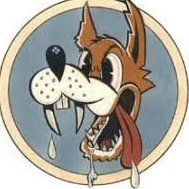
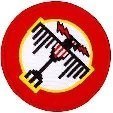
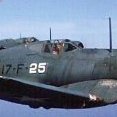
a.thumb.jpg.58d92d116b0315dc55d352fd191d65e4.jpg)
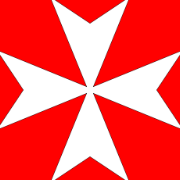
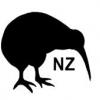
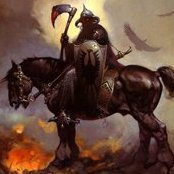

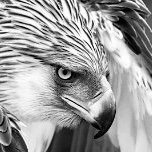




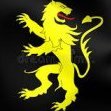
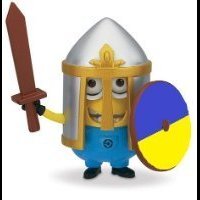
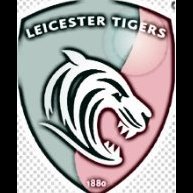
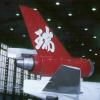
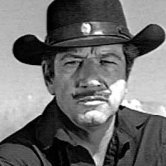
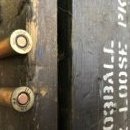
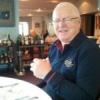
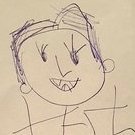


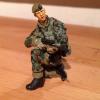

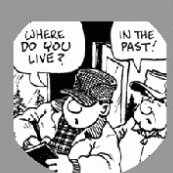
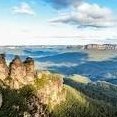
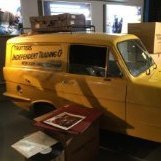


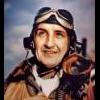
-1-1MINIATURA.thumb.jpg.bd7a7e672869500d45ee6e80478f6f25.jpg)
